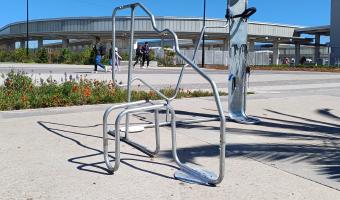
Making the Invisible Visible is a project that tracks cyclists’ routes throughout the city and transforms this data into three-dimensional sculptures that double as public bike repair stations. These sculptural objects not only enhance public space and act as reference points for urban navigation, but also invite cyclists to reflect on bicycle movement across Quito (Ecuador) while repairing their bikes.
Sources:
Barriga-Abril, X., Vivanco, J., Rosas, C., Medina, X., Aulestia, A., & […]
Making the Invisible Visible is a project that tracks cyclists’ routes throughout the city and transforms this data into three-dimensional sculptures that double as public bike repair stations. These sculptural objects not only enhance public space and act as reference points for urban navigation, but also invite cyclists to reflect on bicycle movement across Quito (Ecuador) while repairing their bikes.
Sources:
Barriga-Abril, X., Vivanco, J., Rosas, C., Medina, X., Aulestia, A., & Basantes, A. (2024). Making the Invisible Visible: revealing data in the city. Proceedings of International Structural Engineering and Construction, 11(1), 2024. https://doi.org/10.14455/ISEC.2024.11(1).AAE-04 Barriga-Abril, X. (2025). Data-Driven Self-Portraits: Intimate connections with urban information. Street Art & Urban Creativity, 11(3), 77–92. https://doi.org/10.62161/sauc.v11.5724









